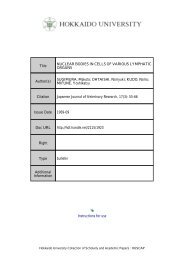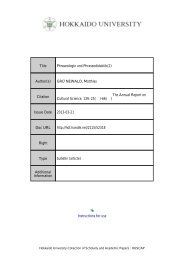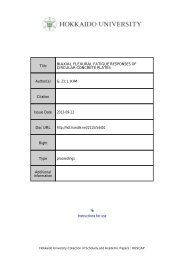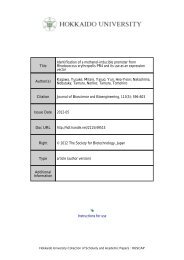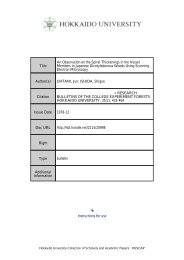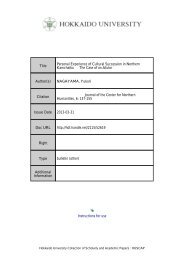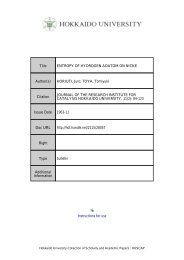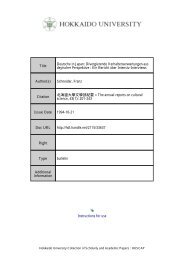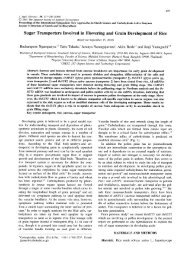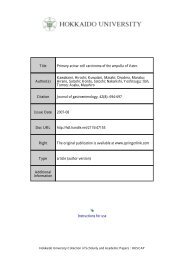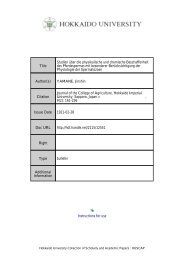ADSORPTION ISOTHERM AND THE STATES OF ADSORPTION
ADSORPTION ISOTHERM AND THE STATES OF ADSORPTION
ADSORPTION ISOTHERM AND THE STATES OF ADSORPTION
You also want an ePaper? Increase the reach of your titles
YUMPU automatically turns print PDFs into web optimized ePapers that Google loves.
162<br />
J. HORIUTI and T. Toy A<br />
because of the contribution from the imperfections mentioned above and at<br />
higher coverage on the other hand, since the preference of r-state adsorption<br />
on the (llO)-plane is more or less counterbalanced by the repulsive interaction<br />
of r-adatoms, which raises the energy of the adatoms.<br />
The theoretical isotherms thus worked out accounts in the main quantitatively<br />
for the observed ones 12 ) but the expected deviations reveal themselves<br />
at lower and higher extremities of coverage as shown in § 7; the<br />
deviation at lower coverages is explained qualitatively attributing it to the<br />
imperfections, whereas that at higher coverge is satisfactorily reproduced by<br />
ascribing it to the s·state adsorption on the (llO)-plane.<br />
It might now be questioned how to reconcile the above conclusion with<br />
the experimental results of the differential isotopic method 13 ) that the portion<br />
adsorbed later is desorbed initially in preference to that adsorbed earlier as<br />
observed by isotopic tracer, which is taken as the exclusive evidence for the<br />
distribution model, on account of the inability of the crystal plane model<br />
to explain it as based on the simple assumption of the repulsive potential<br />
proportional to the coverage. It was shown by one of the present authors W<br />
as summarised in § 8 that the experimental result of the differential isotopic<br />
method is adequately derived from the crystal plane model, if allowed properly<br />
for the repulsive interaction and for the appearance mentioned above of the<br />
s-state on the same plane at higher coverage.<br />
On these grounds it is concluded that the distribution model is inapplicable<br />
but the crystal plane model with the above extension is the sound basis of<br />
accounting for the observed isotherms.<br />
Detailed accounts will be given of the above points in the following sections.<br />
§ 1. Energy of Single Adatom<br />
Consider a hydrogen adatom in the absence of interaction on a perfect<br />
crystal plane of a metal, which will be called a single adatom in what follows.<br />
The energy Wr of a single adatom at the r-state is determined by the equation<br />
10 )<br />
based on the quantum-mechanical theory of adsorption developed by one of<br />
the present authors 10 ), where<br />
Ro: repulsive potential of the adatom due to metal electrons and metal ions,<br />
E+: energy of the H+ -state of the adatom averaged over the vacant energy<br />
( 1)




